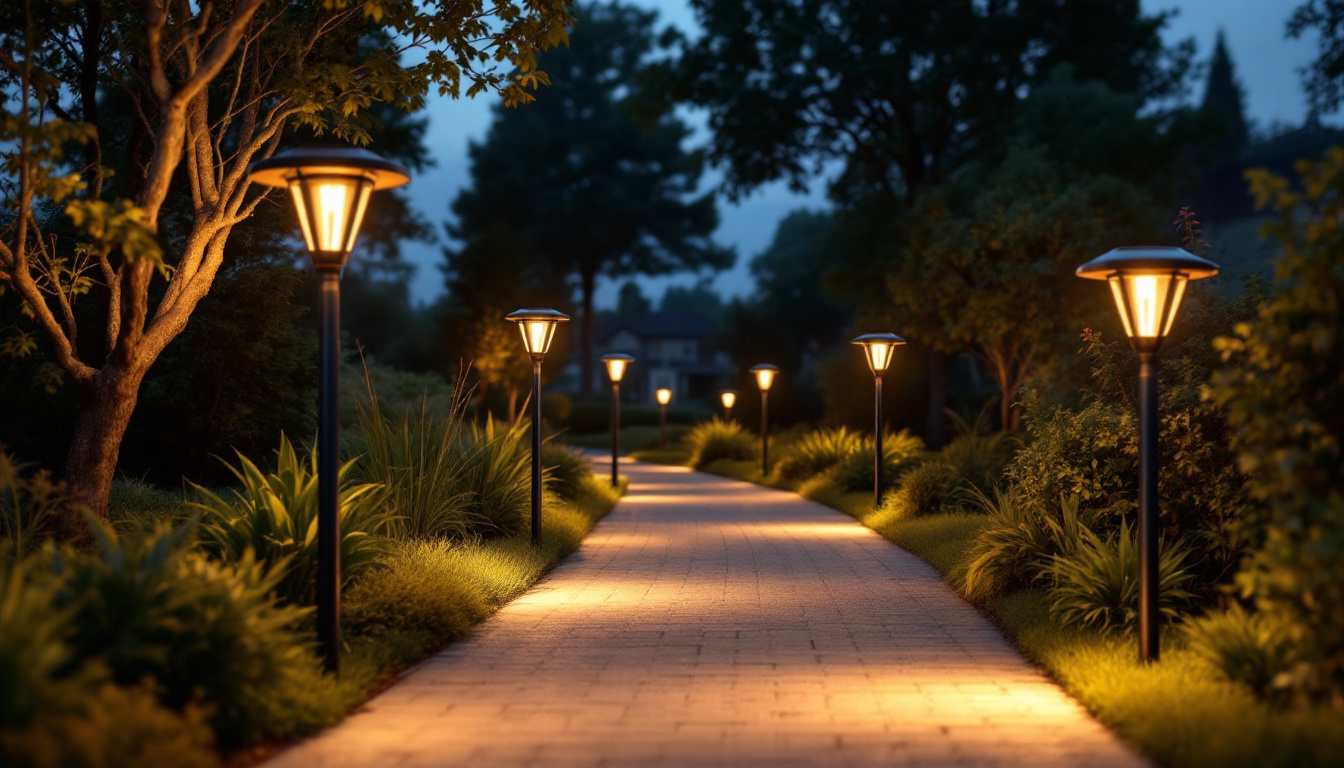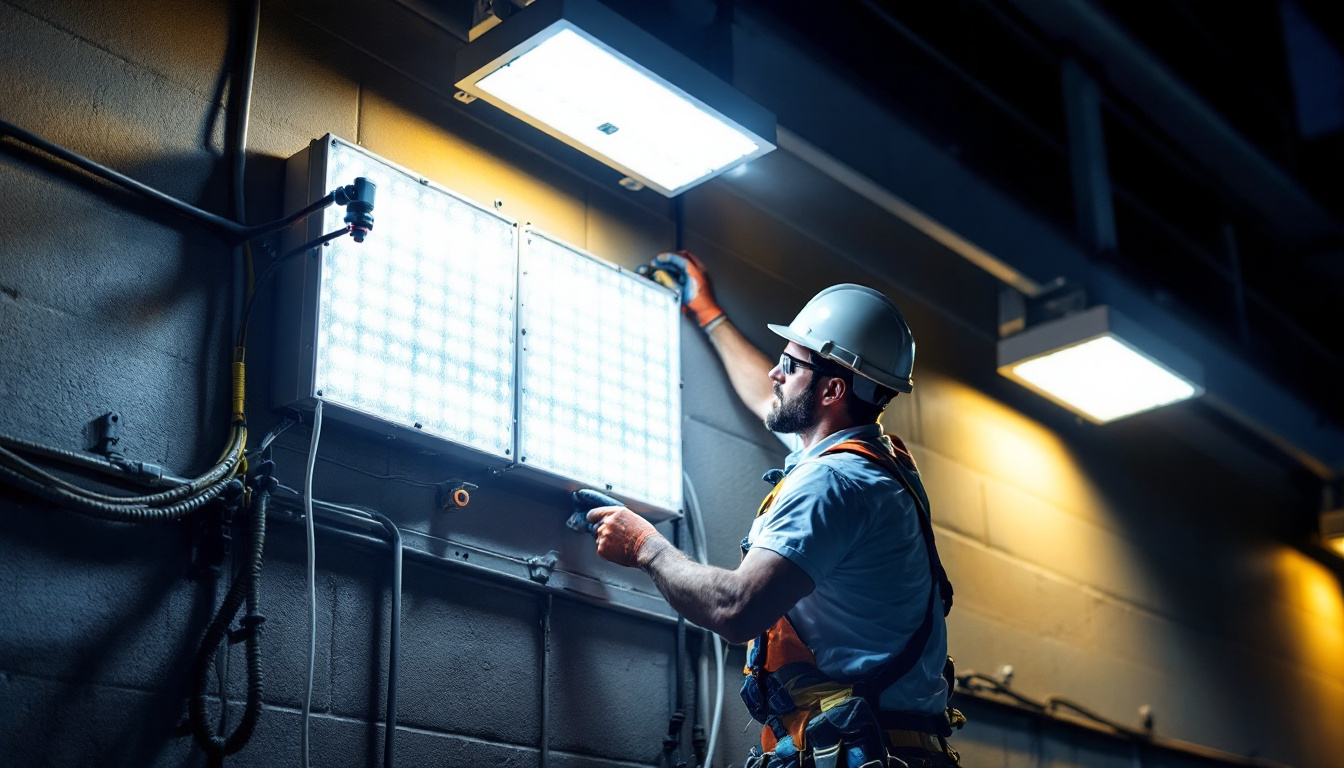

In the ever-evolving world of lighting technology, sodium lights have long been a staple for outdoor and industrial applications. However, with the advent of new lighting technologies, contractors are faced with the challenge of choosing the most effective lighting solutions for their projects. This article delves into the characteristics of sodium lights, explores their alternatives, and provides insights to help lighting contractors make informed decisions.
Sodium lights, particularly high-pressure sodium (HPS) lamps, have been widely used for street lighting, parking lots, and industrial facilities due to their efficiency and long lifespan. These lamps produce a distinctive yellow light, which is a result of the sodium vapor inside the bulb. The light emitted is known for its high lumen output and effectiveness in illuminating large areas. The unique spectral output of sodium lights not only enhances visibility but also contributes to a sense of safety in public spaces, making them a popular choice for urban planners and safety officials alike.
One of the primary advantages of sodium lights is their energy efficiency. They provide a high lumen output per watt, making them a cost-effective choice for extensive outdoor lighting. Additionally, sodium lights have a long operational life, often lasting up to 24,000 hours, which reduces the frequency of replacements and maintenance costs. This longevity is particularly beneficial for municipalities and businesses looking to minimize their operational expenses and environmental impact.
Furthermore, sodium lights are particularly effective in foggy or rainy conditions, as their warm yellow light can penetrate through atmospheric moisture better than cooler color temperatures. This characteristic makes them a preferred choice for street lighting in many municipalities. The ability of sodium lights to maintain visibility in adverse weather conditions not only enhances safety for drivers and pedestrians but also contributes to the overall functionality of urban infrastructure, ensuring that public spaces remain accessible and secure regardless of the weather.
Despite their advantages, sodium lights have notable drawbacks. The most significant is their color rendering index (CRI), which is relatively low compared to other lighting technologies. This means that colors illuminated by sodium lights may appear distorted, which can be a disadvantage in applications where accurate color perception is crucial. For instance, in retail environments or art galleries, the inability to accurately represent colors can detract from the overall experience and may lead to customer dissatisfaction.
Moreover, the warm yellow light produced by sodium lamps may not be aesthetically pleasing for all applications, particularly in urban settings where a more modern, vibrant lighting scheme is desired. As cities evolve and the demand for better lighting quality increases, the limitations of sodium lights become more pronounced. In response to these challenges, many municipalities are exploring alternative lighting technologies, such as LED systems, which offer higher CRI values and a broader spectrum of light, allowing for more vibrant and visually appealing urban landscapes. This shift highlights the ongoing evolution of lighting technology and the need for solutions that meet both functional and aesthetic requirements in contemporary settings.
As the lighting industry progresses, several alternatives to sodium lights have emerged, each with its unique benefits and challenges. Understanding these alternatives can help contractors make informed choices that align with their clients’ needs and project requirements.
Light Emitting Diodes (LEDs) have rapidly gained popularity due to their exceptional energy efficiency and versatility. Unlike sodium lights, LEDs offer a higher CRI, allowing for better color representation. This feature is particularly advantageous in settings such as retail spaces, art galleries, and residential areas where aesthetics matter.
LEDs also have a significantly longer lifespan, often exceeding 50,000 hours, which translates to lower maintenance costs over time. Additionally, they are available in a wide range of color temperatures, giving contractors the flexibility to choose lighting that best suits the specific ambiance of a project. The dimmable nature of many LED fixtures allows for further customization, enabling users to adjust brightness levels according to the time of day or specific activities, enhancing both functionality and comfort.
Induction lighting is another alternative that has gained traction in recent years. These lights operate using electromagnetic fields to excite gas in a bulb, producing light. Induction lights are known for their longevity, often lasting up to 100,000 hours, and they maintain consistent brightness throughout their lifespan.
While induction lighting is not as common as LED technology, it offers a good balance between efficiency and light quality. It provides a warm light similar to that of sodium lamps but with a higher CRI, making it suitable for various applications, including street lighting and parking lots. Furthermore, induction lights are resistant to temperature fluctuations and vibrations, making them ideal for outdoor environments and industrial settings where durability is paramount. Their low flicker rate also contributes to reduced eye strain, making them a preferred choice for spaces where people spend extended periods, such as warehouses and factories.
Compact Fluorescent Lamps (CFLs) are another alternative that has been around for some time. These energy-efficient bulbs use a fraction of the energy consumed by traditional incandescent bulbs while providing a comparable amount of light. CFLs are available in various shapes and sizes, making them suitable for a wide range of fixtures and applications, from residential to commercial settings.
One of the notable advantages of CFLs is their affordability, as they are typically less expensive upfront than LEDs and induction lights. However, they do have a shorter lifespan than LEDs, usually lasting around 10,000 hours. Despite this, their energy-saving capabilities can lead to significant cost savings over time, particularly in environments where lights are used frequently. Additionally, CFLs emit less heat than incandescent bulbs, contributing to a cooler indoor environment and reducing the load on air conditioning systems during warmer months.
When evaluating sodium lights against their alternatives, several factors come into play, including energy efficiency, lifespan, color quality, and cost. Each lighting solution has its strengths and weaknesses, which can influence a contractor’s decision based on specific project requirements.
Energy efficiency is a critical consideration for contractors, especially in large-scale projects. Sodium lights are efficient in terms of lumens per watt, but LEDs have taken the lead in this category, offering even greater efficiency. This efficiency translates to lower energy bills, making LEDs a more attractive option for budget-conscious clients.
While sodium lights have a respectable lifespan, LEDs and induction lights significantly outlast them. The longer lifespan of LEDs and induction lights means that contractors can reduce maintenance frequency and costs, which is particularly beneficial for hard-to-reach installations.
The color quality of lighting is paramount in many applications. Sodium lights, with their low CRI, can distort colors, which may not be acceptable in environments where accurate color representation is essential. In contrast, both LEDs and induction lights offer higher CRI ratings, providing better color accuracy and enhancing the overall aesthetic of a space.
Cost is often a deciding factor for contractors when choosing lighting solutions. Sodium lights are generally less expensive upfront compared to LEDs. However, the total cost of ownership, which includes energy consumption and maintenance, often favors LED and induction lighting in the long run.
While the initial investment for LED lighting can be higher, the long-term savings on energy bills and maintenance can outweigh these costs. Contractors should consider presenting a total cost analysis to clients, highlighting the benefits of investing in more efficient lighting solutions.
Many regions offer incentives and rebates for the installation of energy-efficient lighting systems. Contractors should be aware of these opportunities, as they can significantly reduce the upfront costs of LED and induction lighting projects, making them more appealing to clients.
As sustainability becomes an increasingly important consideration in construction and infrastructure projects, the environmental impact of lighting choices cannot be overlooked. Sodium lights, while efficient, have a more significant environmental footprint compared to their LED counterparts.
LEDs consume less energy than sodium lights, resulting in a lower carbon footprint. This reduction in energy consumption is crucial in efforts to combat climate change and promote sustainability. Additionally, the longer lifespan of LEDs means fewer bulbs end up in landfills, further minimizing environmental impact.
LEDs are generally more environmentally friendly when it comes to disposal. Unlike sodium lights, which may contain hazardous materials, LEDs can often be recycled. Contractors should educate clients about the importance of proper disposal and recycling practices to minimize environmental harm.
Choosing the right lighting solution for a project requires careful consideration of various factors, including the specific needs of the client, the intended application, and budget constraints. By understanding the advantages and disadvantages of sodium lights and their alternatives, contractors can make informed decisions that align with project goals.
Every project is unique, and understanding the specific needs of the client is crucial. For example, if a client prioritizes cost over aesthetics, sodium lights may still be a viable option. However, if the project demands high color accuracy and energy efficiency, LEDs or induction lights would be more appropriate.
As technology continues to advance, it is essential for contractors to consider future-proofing their lighting solutions. Investing in LED or induction lighting not only meets current standards but also prepares for future developments in lighting technology and energy efficiency regulations.
In conclusion, while sodium lights have served the lighting industry well for decades, the emergence of alternatives such as LEDs and induction lighting presents exciting opportunities for contractors. By weighing the pros and cons of each option, considering client needs, and staying informed about industry trends, lighting contractors can make choices that not only enhance their projects but also contribute to a more sustainable future.
Ultimately, the decision should reflect a balance between cost, efficiency, aesthetics, and environmental impact. As the lighting landscape continues to evolve, staying ahead of the curve will ensure that contractors remain competitive and capable of meeting the diverse needs of their clients.
Ready to elevate your lighting projects with the best solutions on the market? Look no further than LumenWholesale, where we provide lighting contractors with top-quality, spec-grade lighting products at unbeatable wholesale prices. Our extensive selection is designed to meet the highest industry standards, ensuring you get reliable, high-performance lighting for every project. Plus, with free shipping on bulk orders, you can enjoy premium lighting at the best value — without hidden fees or compromises. Don’t settle for less; choose LumenWholesale for quality, affordability, and convenience. Explore our wholesale lighting options now and make the smart choice for your clients and the environment.

Discover essential tips for selecting and installing solar post lamps for your driveway.

Discover essential insights into fluorescent light bulbs tailored for lighting contractors.

Discover the essentials of LED wall pack retrofitting in this comprehensive guide tailored for lighting contractors.

Discover the transformative power of lighting strips with expert insights from top lighting contractors.
Get notified when NEW deals are released.
Optimize your budget with wholesale discounts.
Only top-quality, specification-grade lighting products.
No additional costs at checkout - what you see is what you pay.
We understand the unique needs of contractors.